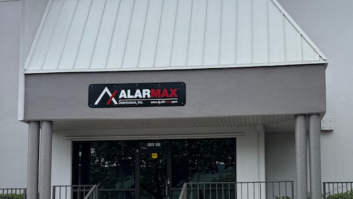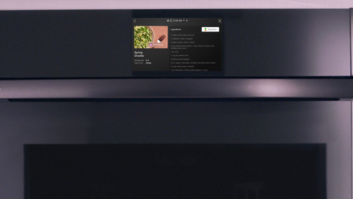As expected, President Clinton signed into law last week new legislation giving satellite providers the right to transmit local network television signals to local viewers.
The guidelines also stipulate terms and conditions under which rural satellite TV viewers and people living in areas with weak off-air reception may receive distant network signals via dish.
Although they were far from fully satisfied with the action taken, the nation’s two direct-broadcast satellite (DBS) providers – DirecTv and EchoStar – welcomed the opportunity to address the biggest impediment they face in recruiting new subscribers.
“Dish Network now gives consumers a real alternative to the rising rates and poor customer service of cable TV,” said Charlie Ergen, EchoStar CEO. “With the president’s signature on the new satellite TV law, Dish Network can now offer a clear choice to consumers who want their local broadcast networks along with hundreds of crystal-clear, all-digital channels.”
The new law “allows us to implement our plan to offer local channels to approximately 50 million homes throughout the country,” said Eddy Hartenstein, DirecTv president.
Both companies responded immediately with promotions for local TV service in served markets. DirecTv began offering service in both New York and Los Angeles, with plans to roll out service in other major markets in the months ahead. EchoStar, meanwhile, has been offering local service to eligible viewers in the nation’s 13 largest cities for more than a year.
The legislation, which was three years in the making, passed both the House and Senate as part of a $400 billion appropriations bill after some last-minute squabbling over eleventh-hour add-ons. One of the more controversial inclusions, which was eventually removed, was a $1.25 billion loan guarantee to develop local TV satellite services for rural markets.
The issues pertaining to satellite TV covered in the comprehensive package included:
- The Individual Location Longley-Rice system for determining the ability of a particular location to receive a clear broadcast signal via rooftop antenna was codified with the caveat that the FCC develop within 180 days a new and more effective point-to-point predictive model. The FCC is instructed to “rely” on the ILLR model to ensure that new model takes into account such elements as terrain, building structures, and other land-cover variations.
- The FCC is instructed to apply rules for the carriage of superstations, although statutory standards are not provided.
- Grade A and B subscribers who had distant network signal service on or before October 31 may keep that service, and many grade B subscribers who had distant network service turned off between July 11, 1998 and October 31, 1999 can have those services restored.
- The Grade B standard, as defined in 1951, was codified, but the FCC was instructed within one year to conclude a study on a new signal reception standard and to make recommendations to Congress on potential modifications for both analog and digital terrestrial broadcasts.
- Local affiliates must act on waiver requests from consumers looking for permission to receive distant network satellite services – if they can not do so via terrestrial antennas – within 30 days.
- And subscribers in unserved areas may receive two distant network signals per network. In addition, if local-into-local is available in a market, subscribers may choose to receive a third local network signal per network.
Chuck Hewitt, president of the Satellite Broadcasting & Communications Association (SBCA) stated that, while the legislation offers some much-needed “building blocks” to the satellite industry, it “does not go far enough. Additional provisions must still be enacted in order for consumers – especially those in small and rural markets – to enjoy the full benefits of competition.”
Among the elements still sought by the SBCA are the following:
- The ability of local-into-local providers to obtain re-transmission consent from broadcasters in a fair and timely fashion.
- A new and improved signal viewing standard that will ensure all satellite customers in unserved households can receive the distant network programming they are entitled to.
- And legislation that will help foster development of local-into-local delivery systems that will enable small and rural market consumers to have access to local broadcast signals.
Ergen said he wanted the legislation to guarantee that satellite companies would not have to pay more than cable companies for the rights to re-transmit local broadcasts.
EchoStar charged some members of Congress with giving into pressure from lobbyists for the broadcast industry. Some broadcasters had fought the legislation because they didn’t want two or more affiliates for one network competing with one another in the same market.
Although few objected to the local-into-local TV language, many broadcasters fought against rules that allowed for distant network channels to be delivered out of their intended markets. Under the law, a court ruling that forced satellite companies to cut off distant network programming to ineligible viewers was codified, while at the same time permitting viewers already receiving those services to continue to do so.
As for new network services, EchoStar’s Dish Network said it would offer packages providing ABC, CBS, NBC and Fox local network channels for $4.99 per month. EchoStar said it also plans to offer popular independent network channels in some markets along with network stations and a national PBS feed.
EchoStar launched the latest phase of its local TV service with a promotional event at a SoundTrack store in Denver on the day that the law took effect.
Local packages are currently offered in New York, Los Angeles, Chicago, San Francisco, Boston, Washington, D.C., Dallas/Fort Worth, Atlanta, Miami, Phoenix, Denver, Pittsburgh and Salt Lake City.
The company said it would also launch local channel service to seven additional cities before the end of 1999 and to 13 additional cities during the first quarter of 2000, bringing local channels to more than 30 of the nation’s largest markets, which reach approximately 60% of the U.S.
Cities targeted for expansion, dependent on gaining re-transmission consent, include Philadelphia, Detroit, Houston, Seattle/Tacoma, Cleveland, Minneapolis, Tampa/St. Petersburg, Fla., Sacramento, Calif., St. Louis, Orlando, Fla., Baltimore, Portland, Ore., Indianapolis, San Diego, Hartford, Conn., Charlotte, N.C., Raleigh/Durham, N.C., Cincinnati, Nashville, Tenn., Milwaukee, Columbus, Ohio, Kansas City, Mo., Roanoke, Va., Oklahoma City, Albuquerque, N.M., Las Vegas, Memphis, Tenn., New Orleans, Jacksonville, Fla., and San Antonio, Texas.
EchoStar began its local TV promotional effort by announcing a reduced retail price for Dish 500 receiver systems, which include a dish capable of receiving local TV and standard dish services. The suggested retail price of a multiroom-ready 3822 Dish 500 satellite TV system was reduced from $249 to $199. The promotion runs through January 31.
DirecTv, meanwhile, immediately began offering service at a rate of $5.99 per month to viewers in Los Angeles and New York, and the company plans to extend the local TV service to San Francisco, Washington, D.C., Denver, Detroit and Miami by the end of the year. Additional markets will be announced in the coming weeks as the rollout continues.
DirectTv is offering customers in New York and Los Angeles a free preview period for local broadcast network service. Customers in those markets who own older systems will see the local channels in the 900 number range, while owners of new DirectTv-Plus systems will find local channels in the “sub-100 channel range,” a DirectTv spokesperson said.
In addition to local ABC, CBS, Fox and NBC channels, the satellite service includes a national PBS feed for the $5.99 per month extra fee.













